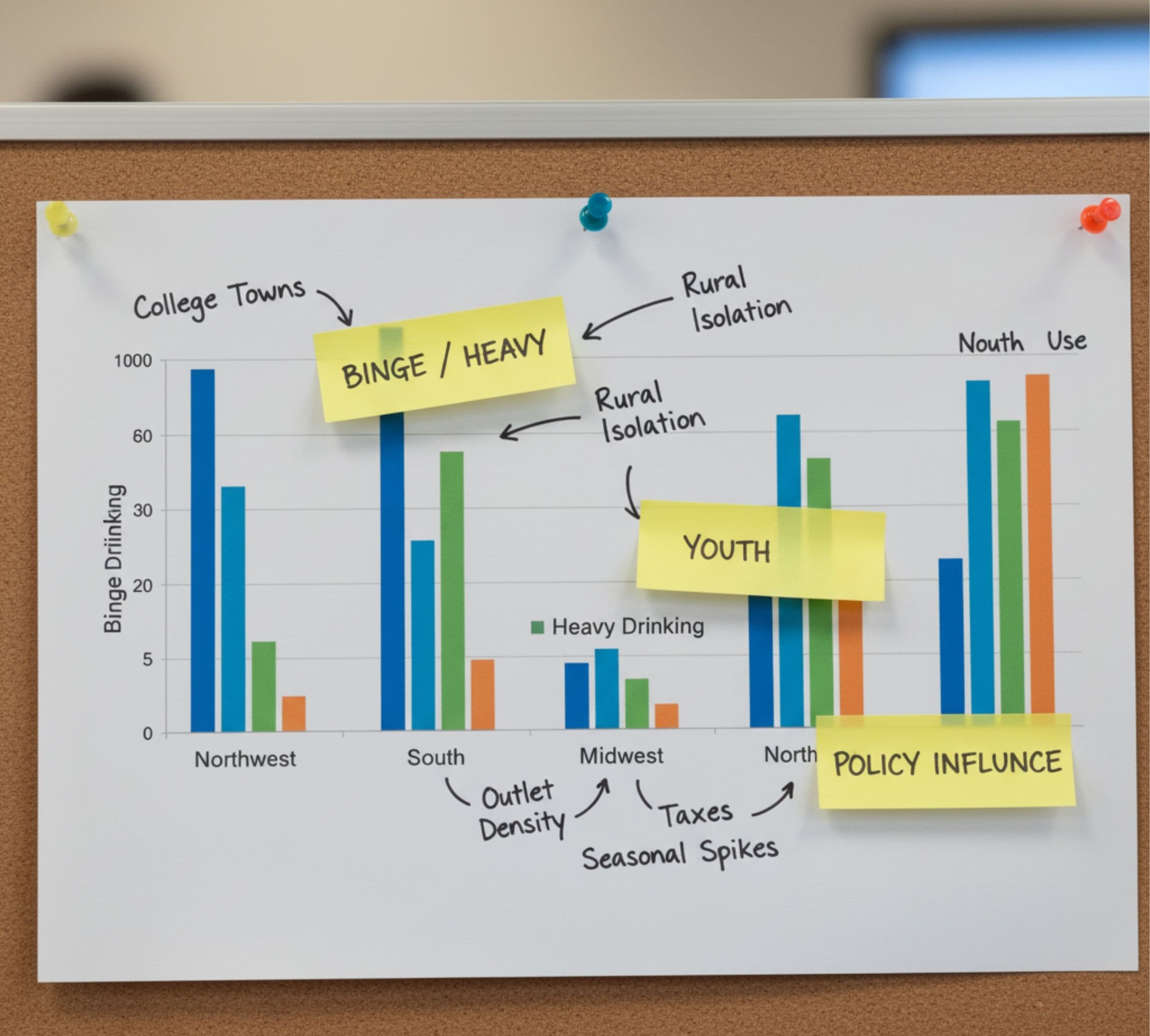Alcohol Consumption by State: What the Numbers Say
TL;DR: Alcohol consumption by state varies with culture, policy, and access. This guide helps you read the data and plan next steps.
When people ask about alcohol consumption by state, they want clarity—not just rankings. State-level data shows real differences driven by culture, policy, geography, and access, but numbers only help if you know how to read them and what to do next.
How the Numbers Are Collected
Most dashboards use large, ongoing surveys and hospital or mortality datasets. The CDC’s alcohol portal and NIAAA resources synthesize multiple sources, including behavioral surveys that ask about binge and heavy drinking, plus outcomes like ER visits and alcohol-attributable deaths. Methods matter: survey questions, response rates, and time windows influence results, which is why trend lines are often more useful than a single point-in-time rank.
Patterns You’ll See Across States

Regional clustering: neighboring states tend to share similar norms and outlet density. Tourist areas may see periodic spikes tied to seasons or events.
Binge vs. heavy drinking: “binge” (short bursts) and “heavy” (chronic volume) indicate different risks. Some states score high on one and moderate on the other, which affects prevention strategy.
Youth and young adults: college towns and rural isolation can each drive higher use, but for different reasons—peer norms vs. limited alternatives and long travel distances.
Policy influence: outlet density, sales hours, taxes, and enforcement shape availability and cost—and therefore consumption patterns.
What Higher Drinking Rates Mean for Risk
Higher state-level drinking correlates with more alcohol-related injuries, impaired driving, and health complications. At the family level, risk rises when alcohol is readily available, stress is high, and coping skills are limited. Watching “near misses” (arguments, work issues, memory gaps) often predicts escalation better than counting drinks alone.
How to Use State Data for Real Decisions
Evaluate your local context: pair a state overview with city/county dashboards and what you’re seeing at home—sleep, mood, secrecy, or missed obligations.
Set bright lines: decide rules around alcohol at home, driving, and events. For some families, no-alcohol in shared spaces reduces conflict and removes triggers.
Watch trend, not moments: track weekly patterns—when, where, and why drinking happens—and intervene early when “just weekends” becomes most days.
For public-health background, see the CDC’s Alcohol & Public Health and the NIAAA overview.
When Inpatient Treatment Makes Sense
If alcohol use is escalating, causing safety issues, or crowding out work and relationships, a contained setting can reset routines and reduce exposure to triggers. Inspire Recovery Center is an inpatient-only program. We address mental health when it co-occurs with substance use—never as a standalone service. Explore Inspire Recovery Center or contact us privately via Contact to talk options that fit your situation.
